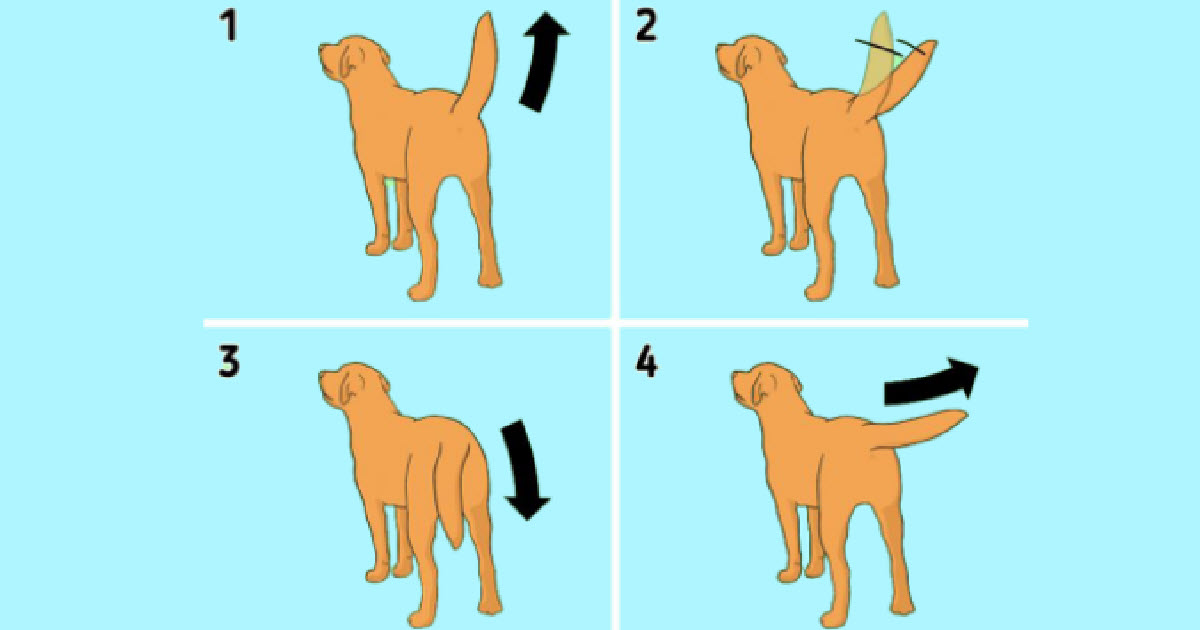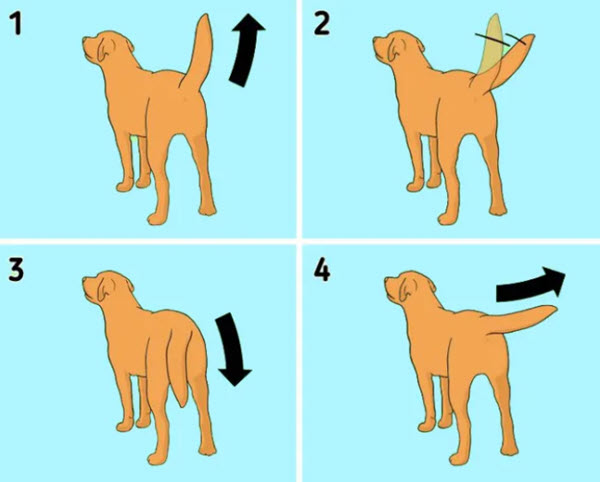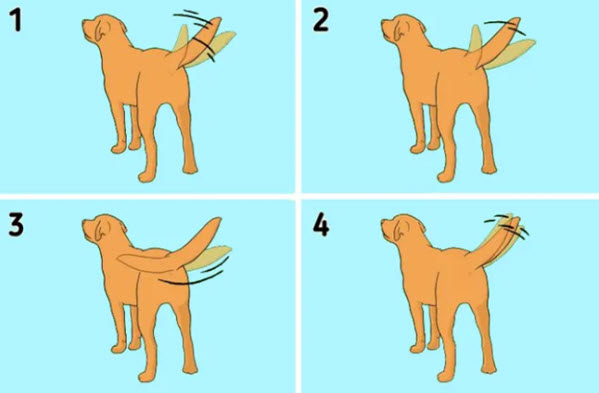Did you know that a dog’s tail is actually a form of communication? While it’s not quite like sign language, a dog’s tail can symbolize certain emotions or moods your dog is feeling.
Much like people, dogs can also differ in how they communicate. So when approaching an unfamiliar dog, pay close attention to its body language along with how it communicates with its guardian to see whether or not it may be a friendly dog. You don’t want to rely on a dog’s tail’s position for that purpose solely.
Tail Position
#1. High and Still
If your dog’s tail is in a high and still position, this means your pup’s alert and attempting to display dominance. [1]
#2. High and Wagging
If your dog’s tail is held high but also wagging, your pup is happy and alert. It can also mean your pup is cautiously excited but still displaying dominance.
#3. Between the legs
If your dog’s tail is between its legs, it usually means your dog is fearful or submissive.
#4. Straight Out
If your dog’s tail is in the straight-out position, this usually means they are taking in some new information and reacting in a natural way.
Tail Movement
#1. Wagging Fast
If your dog wags their tail fast, it means they are very excited. The faster the wag, the more excited your dog feels.
#2. Slow Wag
A slow wag indicates your dog’s insecure about another dog or person.
#3. Free Wag
A free wag (Occasionally accompanied by a wiggle of their hips) shows they are friendly.
#4. Very Fast Wag
This wag shows your dog is threatening and may possibly get aggressive.
Fine Line
There can be a very fine line between a super excited and happy dog and one that’s very agitated and possibly aggressive. You’ll need to look at other factors, such as the way they move. Are they charging and backing up or playfully hopping from foot to foot? Those small clues and more can help you easily tell the difference between friendly and aggressive dogs. But if you’re not sure, don’t confront it.
The Science of Wagging
A study[2] published in 2013 found dogs tend to wag their tails more to the right when excited and more to the left when feeling anxious and stressed.
Thanks for reading. Please be so kind as to pass this story along to your friends and family?
Sources:
- “What Your Dog’s Tail Can Tell You” 5-Minute Crafts.
- “Seeing Left- or Right-Asymmetric Tail Wagging Produces Different Emotional Responses in Dogs” Current Biology. Marcello Siniscalchi, Rita Lusito, Giorgio Vallortigara, and Angelo Quaranta. October 31, 2013.





